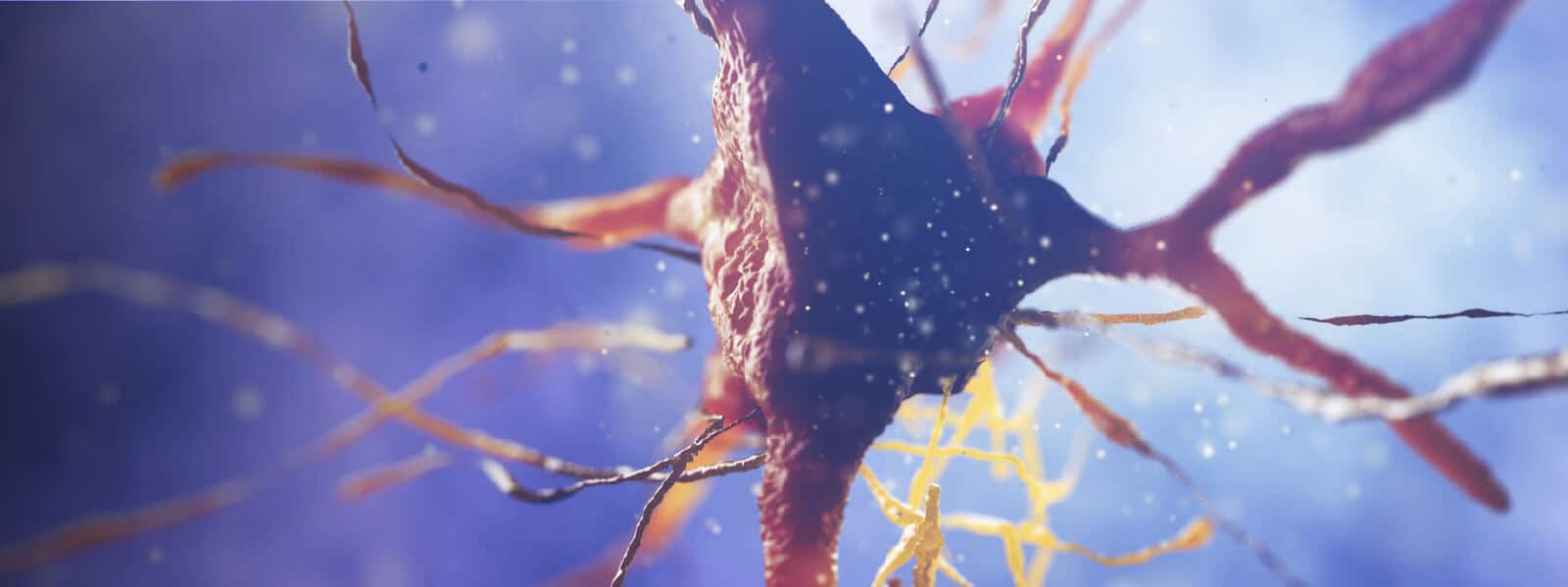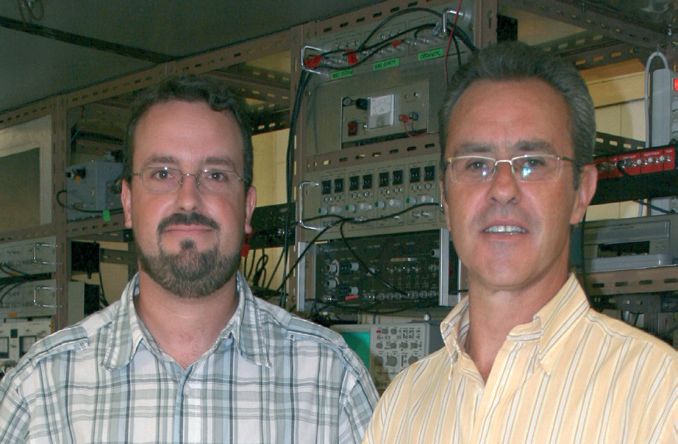
Physiology News Magazine
Where do we look while sleeping?
The question of whether rapid eye movements during sleep are similar to those during alertness has been controversial. Recently, a precise description of eye movements and the behaviour of extraocular motoneurons during the wake–sleep cycle has shown that the oculomotor system is controlled by tonic and phasic signals that fully explain eye movements during sleep. Tonic inhibition and a complex pattern of bilateral activation–inhibition of extraocular motoneurons are responsible for the exclusive characteristics of rapid eye movements during sleep
Features
Where do we look while sleeping?
The question of whether rapid eye movements during sleep are similar to those during alertness has been controversial. Recently, a precise description of eye movements and the behaviour of extraocular motoneurons during the wake–sleep cycle has shown that the oculomotor system is controlled by tonic and phasic signals that fully explain eye movements during sleep. Tonic inhibition and a complex pattern of bilateral activation–inhibition of extraocular motoneurons are responsible for the exclusive characteristics of rapid eye movements during sleep
Features
Javier Márquez-Ruiz (1) & Miguel Escudero (2)
1: División de Neurociencias, Universidad Pablo de Olavide, Sevilla, Spain
2: Neurociencia y Comportamiento, Facultad de Biología, Universidad de Sevilla, Sevilla, Spain
https://doi.org/10.36866/pn.75.28

More than 50 years ago, Aserinsky & Kleitman (1953) reported for the first time the existence of periods with fast and jerky eye movements during sleep, thereby defining a new state that has been named active, paradoxical, or – most generally – rapid eye movement (REM) sleep. The same laboratory observed that REM sleep coincided with periods of dreams with high visual content, and in some studies the researchers found a relationship between the direction of eye movements and the subjects’ reports about what they were seeing during dreaming (Dement & Kleitman, 1957). Thus, eye movements during REM sleep were considered to be related to the exploration of visual scenes during dreaming.
However, the recording of new variables during REM sleep revealed the existence of other phasic phenomena such as high-amplitude spiky potentials – ponto-geniculo-occipital (PGO) waves, recorded mainly at the pons, the lateral geniculate nucleus and the occipital cortex (Jeannerod et al. 1965) – and sporadic muscular twitches (Chase & Morales, 1983), both occurring in coincidence with bursts of rapid eye movements. These observations, together with the regularity in frequency, amplitude and velocity of rapid eye movements recorded in different species, pointed to the possibility that rapid eye movements could result from automatic activations not merely related with visual scanning during dreaming.
To resolve between these two possibilities, it is necessary to know the precise characteristics of eye movements and the mechanisms by which rapid eye movements are generated during sleep compared to alertness. Until now, with very few exceptions, the most popular technique used to record eye movements has been electrooculography, a technique that although easy to implement during sleep, has a very low spatial resolution and does not yield information about eye position in the orbit or the dynamics of the small eye movements. This, besides an almost complete absence of recordings of neuronal activity in the oculomotor system during sleep, has resulted in a continuing confusion about the nature of eye movements during sleep.
It is paradoxical that the key phenomenon that denominates one of the phases of sleep is the least known of all the classical signs of REM sleep, and even more so when the oculomotor system is probably the most-studied and best-known motor system. In 1963, Robinson introduced the scleral search-coil technique into oculomotor research.
This technique determines the exact position of the eye in the orbit even when the eyelids are closed, and is an excellent tool for investigating the physiology of the oculomotor system.
Regarding the motor output of the oculomotor system, the movement of each eye is controlled by the action of six extraocular muscles. Lateral and medial recti control eye movements exclusively in the horizontal plane, while superior and inferior recti and superior and inferior oblique muscles are involved in the control of vertical and torsional movements. Abducting and adducting movements are controlled by abducens (ABD) and oculomotor nucleus, respectively. Internuclear interneurons in the ABD nucleus project to the contralateral oculomotor nucleus, allowing conjugated eye movements in the horizontal plane.
Two recent papers from our laboratory published in The Journal of Physiology provide important detail about the nature of eye movements during the sleep–wake cycle, as well as their relationship with the rest of tonic and phase phenomena. In these studies, we recorded binocular eye movements by the scleral search-coil technique (Márquez-Ruiz & Escudero, 2008) and the activity of identified motoneurons of the ABD nucleus (Escudero & Márquez-Ruiz, 2008) in adult cats.

Eye movements during alertness consisted of conjugated saccades and eye fixations (Fig. 1, awake). During non-REM sleep, the two eyes slowly rotated upwards and in the abducting direction, producing a tonic divergence and elevation of the visual axis (Fig. 1, non-REM sleep). During the transition period between non-REM and REM sleep, rapid, low-amplitude monocular eye movements in the abducting direction occurred in coincidence with PGO waves (Fig.1, transition). In REM sleep, the eyes tended to maintain a tonic convergence and depression, broken by high-frequency bursts of complex rapid eye movements (Fig. 1, REM sleep). In the horizontal plane, each eye movement in the burst comprised two consecutive movements in opposite directions (Fig. 2, see C1 and C2 at right), which were more evident in the eye that performed the abducting movements. In the vertical plane, rapid eye movements were always upward.

The activity of ABD motoneurons during REM sleep was characterised by a tonic decrease of their mean firing rate throughout this period, and short bursts and pauses coinciding with the occurrence of PGO waves (Fig. 2, at bottom). We demonstrate that the decrease in the mean firing discharge was due to an active inhibition of ABD motoneurons, and that the occurrence of primary and secondary PGO waves induced a pattern of simultaneous but opposed phasic activation and inhibition in each ABD nucleus. With regard to eye movements, during REM sleep, ABD motoneurons failed to codify eye position as during alertness, but continued to codify eye velocity.
Comparisons of the characteristics of eye movements during the sleep–wake cycle reveal the uniqueness of eye movements during sleep, and the noteworthy existence of tonic and phasic phenomena in the oculomotor system, not observed until now. The pattern of tonic inhibition and the phasic activations and inhibitions shown by ABD motoneurons coincide with those reported in other non-oculomotor motoneurons (Chase & Morales, 1983), indicating that the oculomotor system – contrary to what has hitherto been accepted – is not different from other motor systems during REM sleep, indicating that all motor systems are receiving similar command signals during this period, and therefore that bursts of rapid eye movement during REM sleep are not directly related to the scanning of images while dreaming. On the other hand, the oculomotor system has been found to be an excellent model for the study of motor control during sleep, enabling accurate recording of the motor output (by the search-coil technique) and the motor and premotor neuronal activity inside the brainstem in a well-characterised system. This new model could throw new light on some human pathologies, such as the risk of myocardial ischaemia or arrhythmia or narcolepsy, in which the phasic and tonic activities during REM sleep are relevant.
References
Aserinsky A & Kleitman N (1953). Regularly occurring periods of eye motility, and concomitant phenomena, during sleep. Science 118, 273–274.
Chase MH & Morales FR (1983). Subthreshold excitatory activity and motoneuron discharge during REM periods of active sleep. Science 221, 1195–1198.
Dement W & Kleitman N (1957). The relation of eye movements during sleep to dream activity: an objective method for the study of dreaming. J Exp Psychol 53, 339–346.
Escudero M & Márquez-Ruiz J (2008). Tonic inhibition and ponto-geniculo-occipital-related activities shape abducens motoneuron discharge during REM sleep. J Physiol 586, 3479–3491.
Jeannerod M, Mouret J & Jouvet M (1965). Étude de la motricité oculaire au cours de la phase paradoxale du sommeil chez le chat. Electroencephalogr Clin Neurophysiol 18, 554–566.
Márquez-Ruiz J & Escudero M (2008). Tonic and phasic phenomena underlying eye movements during sleep in the cat. J Physiol 586, 3461–3477.
Robinson DA (1963). A method of measuring eye movements using a scleral coil in a magnetic field. IEEE Trans Biomed Electr 10, 137–145.
Acknowledgements
This research was supported by grants MCYT-BFU2005-01579 and BFU2008-04537/BFI from the Ministerio de Educación y Ciencia and the Consejeria de Innovación, Ciencia y Empresa of the Junta de Andalucía, Spain.
